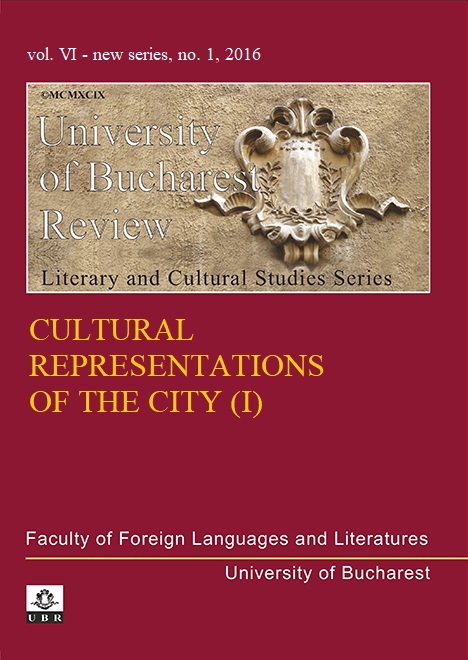“IN HIS BLOOD THE PLUNGE AND RISE OF
ELEVATORS”: POSTHUMAN MANHATTAN IN STEVEN
MILLHAUSER'S MARTIN DRESSLER
“IN HIS BLOOD THE PLUNGE AND RISE OF
ELEVATORS”: POSTHUMAN MANHATTAN IN STEVEN
MILLHAUSER'S MARTIN DRESSLER
Author(s): Anamaria SchwabSubject(s): Fiction
Published by: Editura Universităţii din Bucureşti
Keywords: materialism; posthumanism; Manhattan; excess; production; consumption; 19th century;
Summary/Abstract: In his novel Martin Dressler (1997), contemporary American author StevenMillhauser writes an alternative, fictional history of urban development in 19thcentury Manhattan to resettle the perceived boundaries between the human and thenon-human. More precisely, Millhauser explores the relationship between humanbeing and artefacts in the metropolis, to reflect the increasing reification of theindividual in the context of modern excessive production. As I shall argue in thepresent essay, the novel adopts a subtle yet convincing posthuman perspective, whichhe inscribes into the context of 19th century Manhattan to suggest that the exhaustionof the human started occurring already more than a century ago. Sinceposthumanism is associated especially with the end of the 20th century, what thenovel represents is, I argue, a form of avant la lettre posthumanism that revealsthe embryonic stage of the more recent phenomenon of reification.The essay is divided into two halves that each deals with the trajectory of the titlecharacter. The first half discusses Martin Dressler’s spectacular material and classascendancy from his humble beginnings, and the second one, his descendanttrajectory. Martin’s ascendancy is connected with his efforts to reorganize andredefine a chaotic, modern Manhattan from an architectural point of view, at theend of the 19th century. His descendant trajectory results from his failure to do so.Apart from the issues of spatiality, temporality plays a key role in the novel,considering the impermanent nature of both Manhattan and modernity itself. Theimpossibility of a transhistorical human essence is also seen in relationship withthe posthumanist approach to the novel.
Journal: University of Bucharest Review. Literary and Cultural Studies Series
- Issue Year: VI/2016
- Issue No: 1
- Page Range: 107-120
- Page Count: 14
- Language: English

